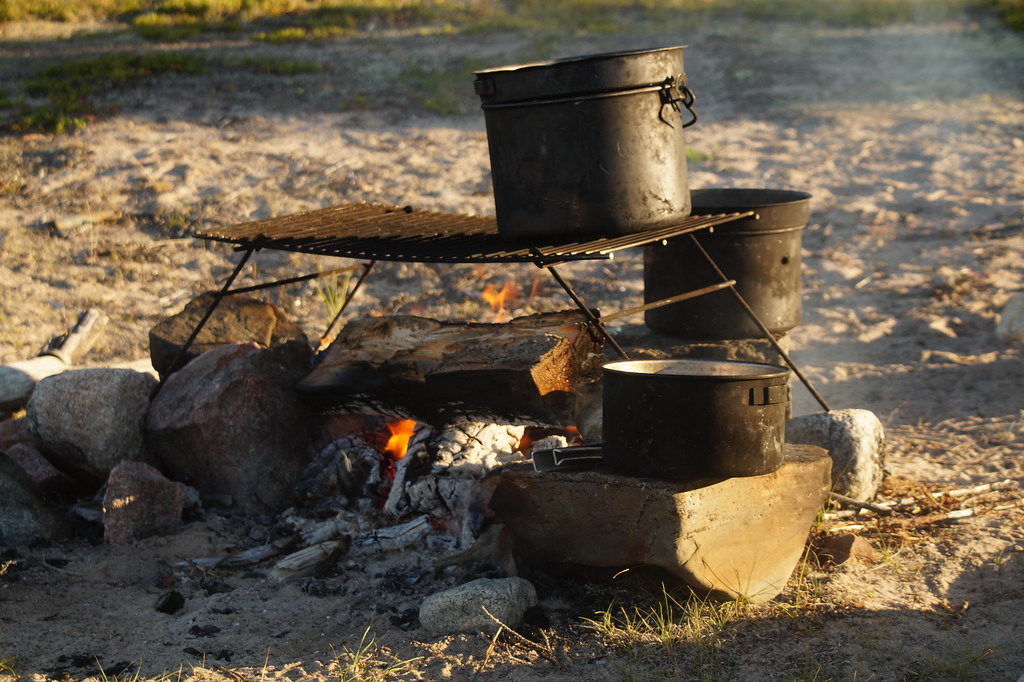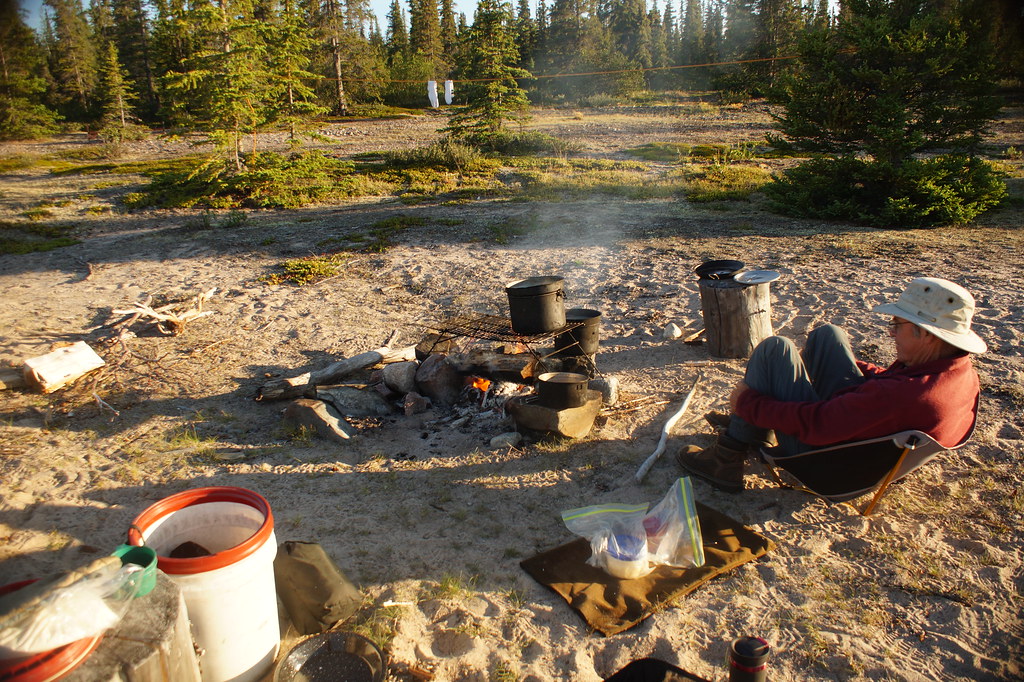- Joined
- Aug 21, 2018
- Messages
- 1,805
- Reaction score
- 4,494

Last Christmas, Kathleen bought two Helinox ground chairs as presents for her and for me. She says she doesn't want to sit on rocks or buckets any more. Says it hurts her back. I am still happy sitting on rocks and buckets, but I have to admit these chairs are very comfortable. Excellent back support, and you can extend your legs out, like having a foot stool. And they fold down into a small stuff sack. And no, I am not a distributer of Helinox ground chairs. I just think they are a very nice addition to our tripping gear.

The next day, we paddled along granite cliffs adorned with fireweed. Still mostly calm conditions. You gotta like that. We are pretty much on the hard Canadian shield. Not many boggy areas, which means not as many bugs as you might think. There were only two occasions on the entire trip when mosquitos were annoying.

Mew Gulls protecting their babies harassed us all afternoon. One particularly agitated parent flew directly at Kathleen in the bow of the canoe. The gull lifted up at the very last second, and let out a truly horrendous shriek. Hard to believe that such a small bird could sound so intimidating and fearsome. You should try paddling by a Mew Gull rockery someday. I guarantee that you will be impressed. We began searching for a sandy beach in the mid-afternoon, but it took us nearly two hours to find this very pleasant site, west of Bigstone Point, a little after 5:00 p.m.

We began the next day, as on most days, with bannock, cooked perfectly to a golden brown. Making bannock for breakfast is one of my very favourite activities on canoe trips. Sometimes I even consider myself a bit of an expert when it comes to cooking bannock. I am proud of my work, and just had to show you this picture. I hope you don’t consider me too boastful. We packed up and paddled away at 9:10 a.m

We reached the Barnston River in two hours, yesterday’s destination on our itinerary. Loons yodelled throughout the afternoon, which featured periods of calm, wind, rain and sun. Several times during the day, when we approached the shore, we felt the warmth of the cliffs greeting us, releasing their heat to the wind blowing across the Canadian Shield—true blasts of warmth in an otherwise cool breeze.At 3:30 p.m., we began looking for a campsite. Nothing. Thirty minutes later, nothing. At 4:30 p.m., nothing. A little after five, we found a narrow, short sandy beach. Not too inviting, but we took it, as the wind began to intensify. The flat beach was not very high above the water. “You know, Kathleen, if the wind shifts, and blows directly toward us, even a little bit more strongly, we could be flooded out.” Photo taken at 7:10 p.m.

A few minutes later, waves started rolling up onto the beach. Not good. We threw all our gear into the bush. We barely squeezed and forced our tent into a cramped spot, half in the bush, and half on the highest, shelf-like portion of the beach, which was now awash in rollers. Fortunately, the water didn't come up any higher. Photo taken at 8:24 p.m.

We woke up at 6:30 a.m., probably because the wind was just starting to pick up again. We were both still sleepy, and would have preferred to stay hunkered down in our sleeping bags. But we had to get going, so we paddled away from our very low, narrow beach at 9:15 a.m. The shoreline had numerous points projecting out into McLeod Bay. And each time we rounded a point, the paddling conditions became progressively more challenging. There were still only a few whitecaps out on the bay, but deep rollers buffeted our canoe from the side. Paddling conditions were not only challenging, but also unpleasant. After an hour of struggling, we pulled off at the beach just a few hundred metres (yards) below the mouth of the Waldbon River. In addition to the .308 rifle, we also carry bear spray and a bear banger. In our lives we have seen, on the ground approximately 100 black bears, 40 grizzly bears and five polar bears. We have never been charged or threatened, but the polar bears didn't run away. (To be continued.)





























